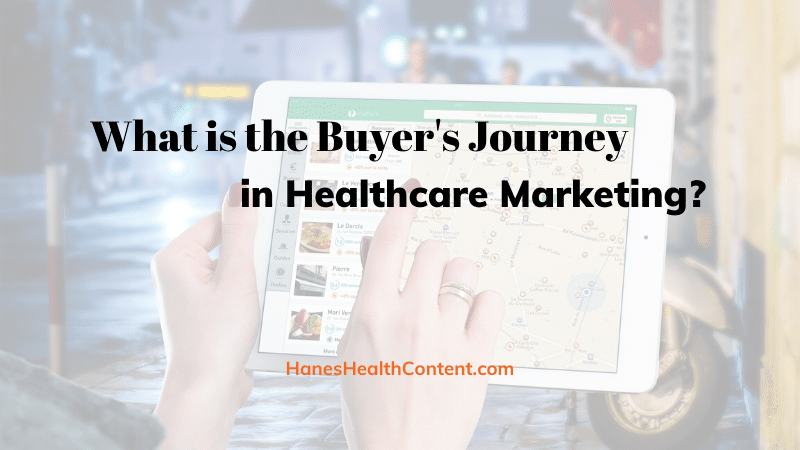No marketing strategy can be successful without a good understanding of the buyer’s journey. Yet this concept may be foreign to clinicians in private practice (think: plastic surgeons, dermatologists) and small business owners (looking at you, nurse entrepreneurs). Today I’d like to introduce you to the healthcare buyer’s journey – to help you understand what it is and why it matters to your marketing.
What is a “buyer’s journey”?
If you run a Google search, you’ll find different terms for the concept of the “buyer’s journey.” In the past, we called it the “sales funnel.” Today, many marketers call it the “customer journey.” But no matter how we label it, the definition is the same: It’s the process a person goes through before engaging in a consumer relationship with a business.
You also may discover that marketers don’t concur on exactly how many stages a given consumer goes through before making a purchase. At a minimum, each buyer goes through three:
Stage 1: Awareness
Stage 2: Consideration
Stage 3: Decision
Marketers may add stages to this journey, but these three steps represent the basic process buyers go through before purchasing.
What does the buyer’s journey look like in healthcare?
Let’s take a hypothetical buyer’s journey, ourselves, to understand what the process might look like for a 20-something woman interested in breast augmentation.
Stage 1 (Awareness): Thanks to a general social awareness of cosmetic surgery procedures, the woman knows she can get a procedure to increase her breast size. She may perform online research to learn which local plastic surgeons offer this service, or she might view a social media advertisement, or she might look for reviews of local cosmetic surgeons to inform her discovery process.
Stage 2 (Consideration): The prospective patient has narrowed down her preferred list of plastic surgeons. She has thoroughly investigated the types of breast implants available and has developed an opinion on what style she would prefer, as well as the size of implant she think would achieve her desired look. Now she may book a consultation to get a surgeon’s expert opinion, gather information about cost, and generally evaluate her rapport with each of the candidates.
Stage 3 (Decision): The woman discusses her options with trusted advisors (family members, close friends) and decides on a cosmetic surgeon. She calls the office for an appointment to begin the process.
As you might imagine, the details of this journey will vary significantly for buyers in different healthcare verticals and situations. For instance, an adult child seeking in-home care for an elderly parent living 1,000 miles away may move more rapidly through the steps – and rely more on advertising messages – than our breast augmentation patient did. Or, a CNO evaluating a nurse-owned staffing agency might take a very long journey that affords you the opportunity to continue cultivating the relationship during Stage 2 with robust, engaging content offerings.
Why your understanding of the buyer’s journey matters
Recently I divulged my “ultimate answer to the ‘should I do X?’ marketing question in healthcare,” and understanding the buyer’s journey factors heavily into that answer. Understanding the details of the journeys taken by your buyers allows you to create highly targeted content marketing initiatives that are appropriate for the various stages. Not all types of content are right for each stage of the buyer’s journey. If you send the wrong content at the wrong time, you’re wasting time, money, and effort.
Thankfully, you don’t have to become an expert in healthcare content marketing to leverage the value of understanding the buyer’s journey. You can partner with an expert, instead. But every solo practitioner or healthcare entrepreneur owes it to herself to develop a basic understanding of the buyer’s journey and its importance in achieving the business results she deserves.
![]()
P.S.: In case you missed it, you still can grab a free download of my helpful ebook: 7 Deadly Sins of Healthcare Content Marketing that Kill SEO and Turn Off Prospective Clients

